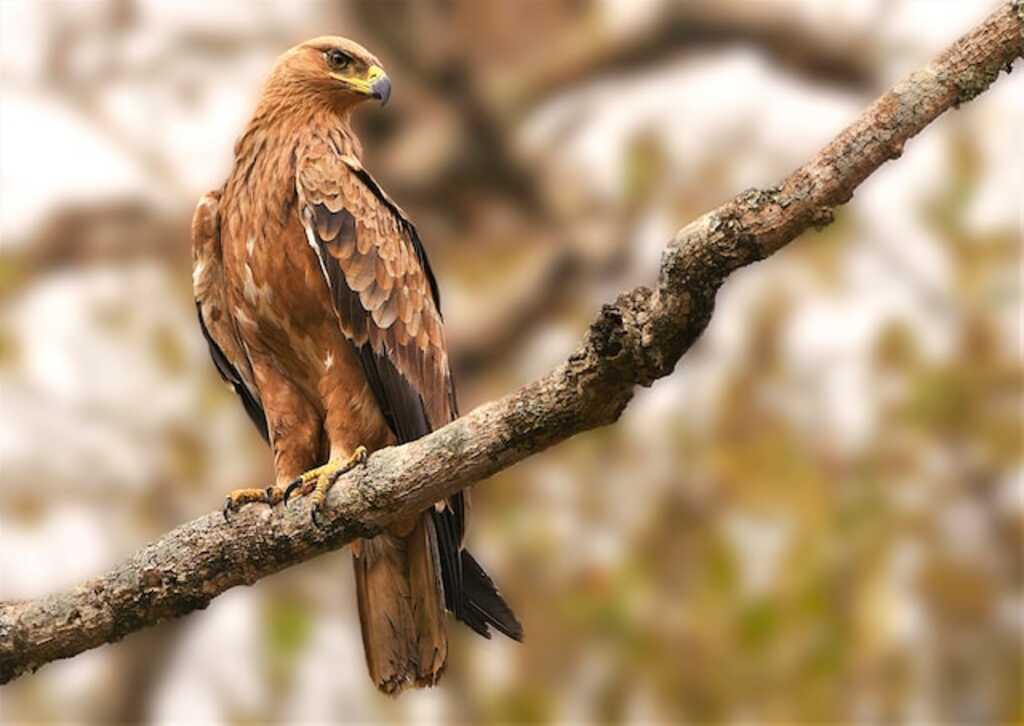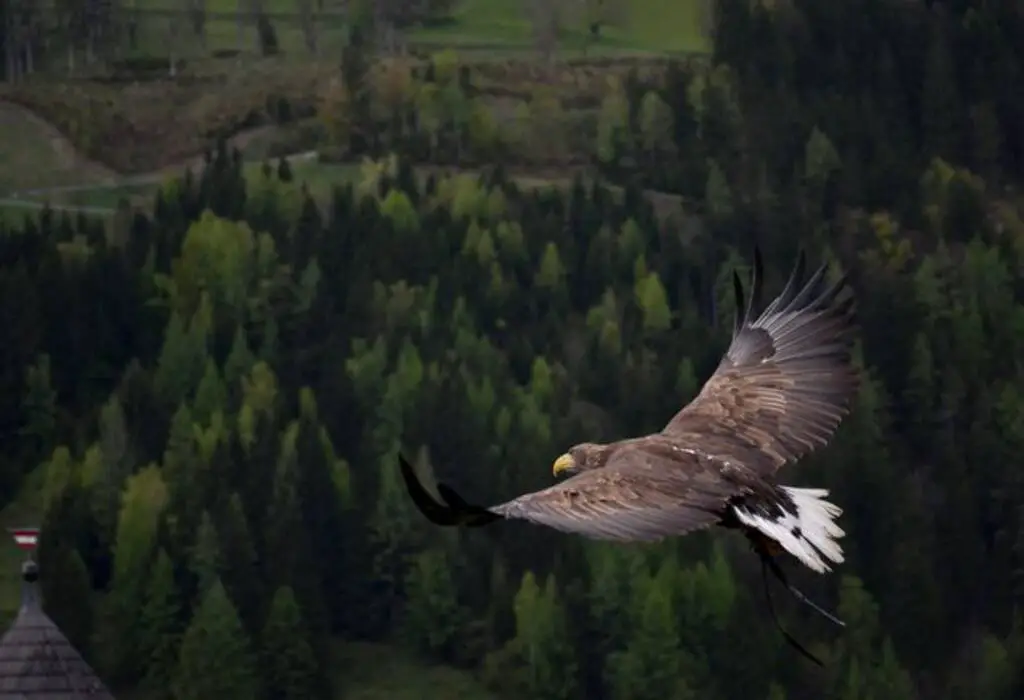Do eagles eat coyotes?
This intriguing question delves into the fascinating world of predator-prey relationships and the dynamics of ecological niches.
Eagles, known for their impressive hunting abilities and keen eyesight, are apex predators that occupy the skies, while coyotes, agile and adaptable predators, roam the land.
This article aims to explore the possibility of eagles preying on coyotes, analyzing their respective diets, behaviors, and ecological roles.
By examining scientific research, observations, and expert opinions, we will delve into the likelihood of such an unlikely predation scenario.
Additionally, we will consider alternative predators of coyotes and the ongoing debates surrounding this topic.
Through an objective and evidence-based approach, this article aims to shed light on the complex interactions between these two remarkable species and provide a comprehensive understanding of their interactions in the wild.
Table of Contents
- 1 Key Takeaways
- 2 The Diet of Eagles
- 3 The Behavior of Coyotes
- 4 Natural Enemies and Prey Dynamics
- 5 Research and Observations
- 6 Size and Strength Comparison
- 7 Ecological Niche and Food Sources
- 8 Do Eagles Eat Coyotes
- 9 Unlikely Predation Scenarios
- 10 Other Predators of Coyotes
- 11 Expert Opinions and Debates
- 12 Frequently Asked Questions
- 12.1 How do eagles and coyotes interact in the wild?
- 12.2 Are there any known instances of eagles preying on coyotes?
- 12.3 Do eagles and coyotes compete for the same food sources?
- 12.4 Are there any other predators that commonly prey on coyotes besides eagles?
- 12.5 What are the opinions of experts regarding the possibility of eagles eating coyotes?
- 13 Conclusion
- 14 Author
Key Takeaways
- Eagles and coyotes are both predators, with eagles being apex predators in the sky and coyotes being adaptable predators on land.
- Eagles have been observed hunting and feeding on coyotes, despite the size difference, indicating that this behavior is not uncommon.
- Factors influencing predator-prey dynamics include prey availability, hunting strategies, and environmental conditions.
- Understanding predator-prey dynamics is important for maintaining ecological balance and predicting and managing ecosystem dynamics.
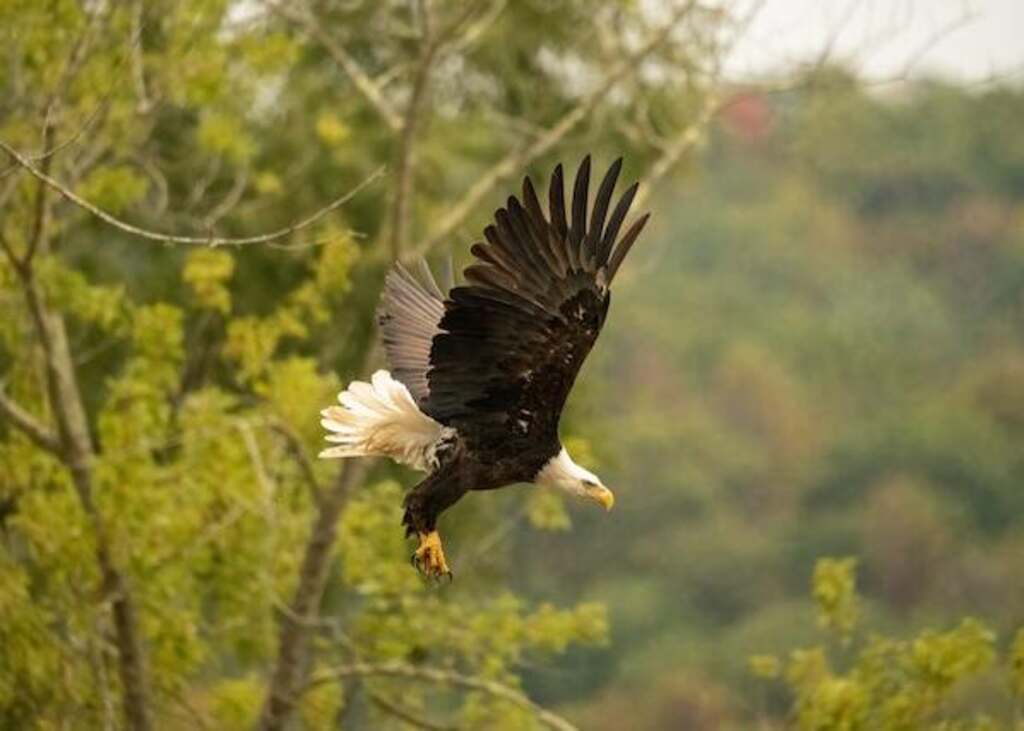
The Diet of Eagles
The diet of eagles is a subject of great interest, as it sheds light on the species’ feeding habits and ecological role.
Eagles are known to be opportunistic hunters, employing a variety of hunting techniques to capture their prey. They possess exceptional eyesight, which allows them to spot potential prey from great distances.
Environmental factors such as food availability and habitat play a significant role in shaping the diet of eagles.
For example, eagles living near bodies of water are more likely to feed on fish, while those in more arid regions may rely on small mammals and reptiles.
Additionally, eagles have been observed scavenging carrion, further expanding their dietary range.
Transitioning to the subsequent section, the behavior of coyotes also demonstrates interesting feeding patterns influenced by environmental factors.
The Behavior of Coyotes
One intriguing fact about the behavior of coyotes is that they have adapted to various habitats, ranging from deserts to forests, allowing them to thrive in diverse ecosystems.
Coyotes are highly adaptable and can survive in both rural and urban areas, making them one of the most successful carnivores in North America.
They are primarily nocturnal, displaying increased activity during dawn and dusk.
Coyotes are opportunistic feeders and have a varied diet, consisting of small mammals like rabbits, rodents, and even fruits and vegetables. They also scavenge on carrion and are known to be efficient hunters.
Coyotes exhibit complex social structures, living in family groups called packs. The packs are usually composed of an alpha pair, their offspring, and sometimes unrelated individuals. This social structure enables them to effectively defend territories and cooperate during hunting and raising their young.
Understanding coyote behavior is crucial in examining predator-prey dynamics in natural ecosystems.
In the subsequent section about natural enemies and prey dynamics, we will explore the interactions between coyotes and other animals in more detail.
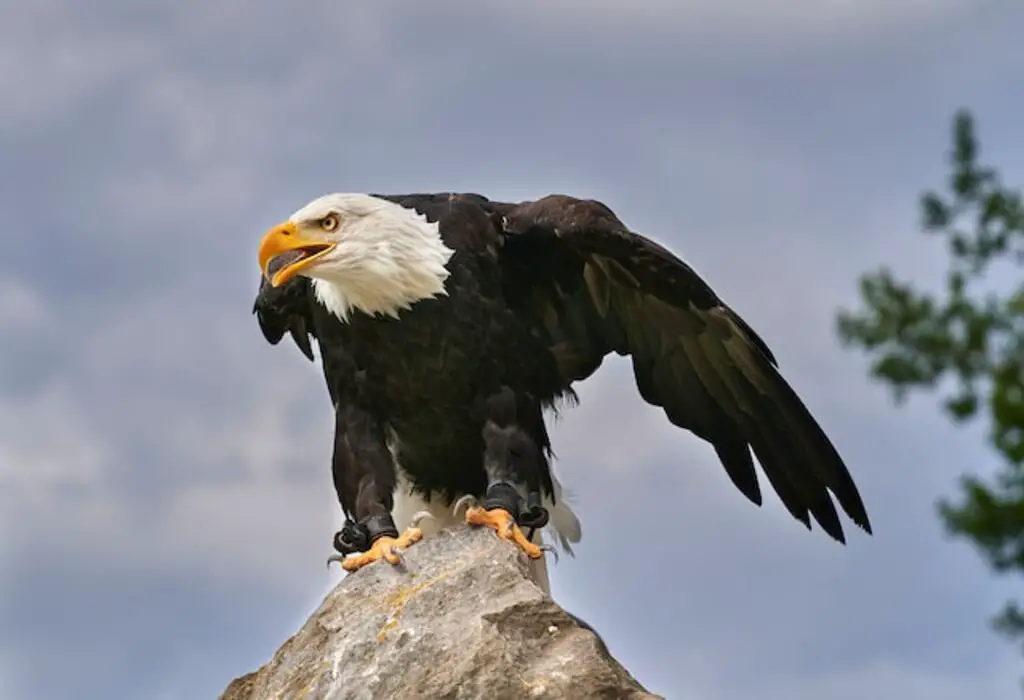
Natural Enemies and Prey Dynamics
In nature, predator-prey relationships are common and play a crucial role in maintaining ecosystem balance.
Predators often target prey that are smaller or similar in size to themselves, as this increases their chances of successful capture.
However, there are also examples of predators targeting prey that are larger than themselves, such as when eagles prey on coyotes.
Factors influencing predator-prey dynamics include the availability of prey, predator hunting strategies, prey defense mechanisms, and environmental conditions.
Common predator-prey relationships in nature
Predator-prey relationships in nature reveal the intricate balance and interdependence between species. These interactions play a crucial role in maintaining ecological balance and regulating population sizes.
Predators, such as eagles, are an integral part of these relationships as they actively hunt and consume their prey.
While eagles are known for their ability to capture and feed on smaller animals like rabbits, rodents, and fish, they are also capable of targeting larger prey.
Examples of predators targeting prey larger than themselves include instances where eagles have been observed hunting and feeding on coyotes.
These interactions highlight the adaptability and resourcefulness of predators in their quest for sustenance.
Understanding the dynamics of such predator-prey relationships provides valuable insights into the complex webs of life and the survival strategies employed by different species.
Examples of predators targeting prey larger than themselves
An astonishing example of a predator targeting prey larger than itself involves the powerful and resourceful eagle swiftly and tactfully capturing and consuming coyotes.
While it may seem unlikely due to the size difference, eagles have been observed preying on coyotes in certain instances.
One notable example occurred in Montana, where an eagle was spotted attacking a young coyote. The eagle used its powerful talons to immobilize the coyote and then proceeded to consume it.
This behavior is not common, as eagles typically target smaller prey such as rabbits and fish. However, it demonstrates the adaptability and opportunistic nature of these birds of prey.
Understanding the factors influencing predator-prey dynamics is crucial in comprehending such exceptional events.
Transitioning into the subsequent section, these factors include habitat availability, prey abundance, and predator hunting strategies.
Factors influencing predator-prey dynamics
Factors such as habitat availability, prey abundance, and predator hunting strategies play a significant role in shaping the dynamics between predators and their prey.
Ecological balance is maintained when predators are able to control prey populations, preventing them from becoming too abundant and overwhelming their resources.
Prey abundance is a crucial factor, as predators require a sufficient food source to survive and reproduce.
Additionally, habitat availability influences predator-prey dynamics by providing suitable areas for both predators to hunt and prey to find shelter.
Predator avoidance behaviors, such as camouflage or defensive mechanisms, also impact these dynamics.
Understanding the factors that influence predator-prey dynamics is essential for maintaining the overall health and stability of ecosystems.
In the subsequent section about research and observations, we will delve deeper into the specific studies and findings that have contributed to our understanding of predator-prey interactions.
Research and Observations
One aspect that has been extensively researched and observed is the feeding behavior of eagles towards coyotes. Researchers have employed various research methods to study this phenomenon, including field observations.
Through these methods, scientists have gathered valuable data on the interaction between eagles and coyotes in their natural habitats.
Field observations have provided insights into the hunting strategies employed by eagles when targeting coyotes as prey.
These observations have revealed that eagles often take advantage of their aerial capabilities to ambush and attack coyotes from above.
Additionally, researchers have documented instances where eagles have successfully captured and consumed coyotes, indicating that this behavior is not uncommon.
These findings highlight the importance of understanding the predator-prey dynamics between eagles and coyotes.
Transitioning into the subsequent section about ‘size and strength comparison,’ it is evident that such dynamics are influenced by factors beyond the feeding behavior of eagles.
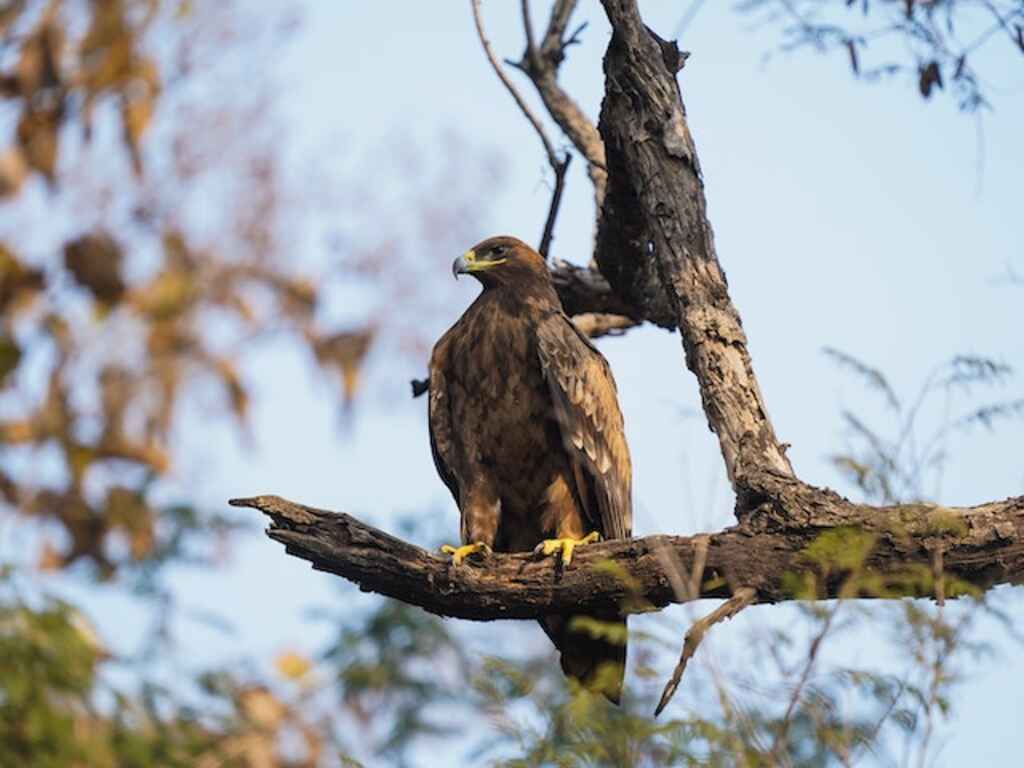
Size and Strength Comparison
In light of the previous subtopic discussing research and observations, it is crucial to explore the size and strength comparison between eagles and coyotes.
Eagles are known for their impressive size, with wingspans reaching up to 7 feet, while coyotes are relatively smaller, weighing around 20 to 50 pounds.
This significant difference in size gives eagles an advantage when it comes to hunting techniques.
Eagles employ a variety of hunting strategies, such as swooping down from great heights or snatching prey from the water’s surface.
On the other hand, coyotes rely on their agility and cunning to catch their prey on land.
By understanding the size and hunting techniques of these two species, we can gain insight into their ecological niche and food sources.
Transitioning to the subsequent section, the ecological niche and food sources of eagles and coyotes reveal fascinating aspects of their respective habitats.
Ecological Niche and Food Sources
The ecological niche and food sources of eagles and coyotes unveil intriguing aspects of their respective habitats, shedding light on their distinct roles within the ecosystem.
Eagles primarily occupy the upper level of the food chain dynamics in their habitats, often referred to as apex predators. Their diet mainly consists of small mammals, fish, and birds, with occasional scavenging.
On the other hand, coyotes are opportunistic omnivores, adapting their diet based on the availability of resources. Their food sources include small mammals, birds, reptiles, fruits, and even carrion.
While both eagles and coyotes play vital roles in maintaining ecosystem balance, their feeding habits differ significantly.
The eagles’ predation on smaller animals regulates their populations, contributing to a balanced food chain.
In contrast, coyotes’ flexible diet helps in controlling herbivore populations and promoting biodiversity.
Understanding these ecological dynamics is crucial in comprehending the delicate interplay between species within an ecosystem.
This knowledge sets the stage for exploring unlikely predation scenarios, where eagles and coyotes may cross paths in their search for sustenance.
Do Eagles Eat Coyotes
No, eagles do not typically eat coyotes. While eagles are powerful predators, their diet primarily consists of fish, birds, small mammals, and carrion.
Coyotes, on the other hand, are larger mammals that are not part of the typical prey range for eagles.
These two species generally occupy different ecological niches and have distinct hunting strategies and dietary preferences.
Unlikely Predation Scenarios
In the previous subtopic, we explored the ecological niche of eagles and their food sources. Now, let’s delve into the topic of unlikely predation scenarios involving eagles and coyotes.
While eagles are known to be opportunistic predators, preying on a variety of small to medium-sized animals, including mammals, birds, and reptiles, it is highly unlikely for them to prey on coyotes.
Eagles primarily hunt for prey that is smaller and easier to capture, such as fish, rabbits, and small mammals.
Coyotes, on the other hand, are highly adaptable and intelligent predators, known for their efficient hunting tactics.
They primarily feed on small mammals, birds, and carrion. Therefore, given the difference in size and hunting behavior, it is unlikely for eagles to target coyotes as their prey.
To further explore the predators of coyotes, let’s move on to the next section.
Other Predators of Coyotes
Another important aspect to consider is the range of predators that coyotes have to contend with in their natural habitat.
Coyotes are not only preyed upon by larger predators such as wolves and mountain lions, but they also face a significant threat from smaller predators.
One such predator is the bobcat, which is known to hunt and kill coyotes when given the opportunity.
Additionally, bears have been observed preying on coyotes, particularly during the spring when bears are emerging from hibernation and are in need of food.
Lastly, coyotes are also vulnerable to predation by birds of prey such as golden eagles and great horned owls.
These birds have been known to take advantage of coyotes as a food source, using their aerial hunting techniques to swoop down and capture unsuspecting individuals.
It is important to understand the diverse array of predators that coyotes face in order to gain a comprehensive understanding of their ecological dynamics.
Transitioning into the subsequent section about expert opinions and debates, it becomes evident that the predation of coyotes by eagles is a topic that has generated ongoing discussion and speculation.
Expert Opinions and Debates
The evidence and findings on whether eagles eat coyotes are somewhat limited and inconclusive.
While there have been documented cases of eagles attacking and killing coyotes, these instances are rare and anecdotal.
Additionally, the size and strength of coyotes make them a challenging prey for most eagle species, further reducing the likelihood of predation.
Overall, the predator-prey dynamics between eagles and coyotes are complex and influenced by various factors such as habitat, prey abundance, and competition with other predators.
Summarizing the evidence and findings
Summarizing the evidence and findings of whether eagles eat coyotes reveals intriguing insights into the predator-prey dynamics of these two species.
Analysis of available evidence suggests that while eagles are known to be powerful predators capable of capturing and consuming a wide range of prey, there is limited scientific documentation of eagles preying on coyotes.
This lack of evidence raises important questions regarding the potential implications for research and our understanding of these predator-prey interactions.
To evoke an emotional response in the audience, consider the following points:
- The mysterious nature of eagle-coyote interactions leaves room for further investigation and discovery.
- The potential impact of eagles on coyote populations and ecosystem dynamics is yet to be fully understood.
- The complex and dynamic relationships between predator and prey highlight the intricate web of life in our natural world.
Considering the evidence presented, it is crucial to explore and examine the likelihood of eagles consuming coyotes further, as it may provide valuable insights into the delicate balance of nature and the interconnections between species.
Final thoughts on the likelihood of eagles eating coyotes
Given the limited scientific documentation and mysterious nature of eagle-coyote interactions, further exploration into the potential consumption of coyotes by eagles holds promise for uncovering new insights into the intricacies of predator-prey dynamics and their impact on ecosystem dynamics.
While there have been occasional anecdotal reports and a few documented instances of eagles preying on coyotes, the overall likelihood of such predation events remains unclear.
It is important to consider factors such as the size and behavior of the coyote, as well as the hunting strategies and preferences of eagles.
Additionally, the availability of alternative prey species and the geographical distribution of eagles and coyotes further complicate the assessment of the likelihood of predation.
Further research, including careful observation and analysis of eagle-coyote interactions, could shed light on the ecological interactions and contribute to our understanding of the complexity of predator-prey dynamics in nature.
The complexity of predator-prey dynamics in nature
Unraveling the intricacies of predator-prey dynamics in nature unveils a complex web of interactions that shape ecosystem dynamics and challenge our understanding of the delicate balance between species.
Predator-prey relationships exhibit a multitude of complexities that are influenced by various ecological factors. These factors include population sizes, prey availability, habitat structure, and interspecific interactions.
The dynamics between predators and prey are not solely governed by the consumption of one species by another, as other factors such as competition, mutualism, and resource partitioning also come into play.
Moreover, predator-prey relationships can exhibit cyclical patterns, where the abundance of one species influences the abundance of the other in a continuous cycle.
Furthermore, the impacts of predator-prey dynamics extend beyond the immediate interaction, affecting the entire ecosystem.
Understanding these complexities is crucial for predicting and managing ecosystem dynamics and ensuring the preservation of biodiversity.

Frequently Asked Questions
How do eagles and coyotes interact in the wild?
Predator-prey dynamics between eagles and coyotes in various ecosystems are influenced by the impact of human activities. Understanding these interactions is crucial for conservation efforts and maintaining the ecological balance in the wild.
Are there any known instances of eagles preying on coyotes?
There is limited evidence of eagles preying on coyotes, with most interactions between eagles and coyotes involving competition for resources rather than predation. Predator-prey dynamics between eagles and coyotes are complex and vary depending on factors such as habitat and prey availability.
Do eagles and coyotes compete for the same food sources?
Competition between eagles and coyotes for the same food sources can have significant impacts on the balance of ecosystems. This competition can lead to changes in population dynamics, resource availability, and ultimately affect the overall ecological stability of the system.
Are there any other predators that commonly prey on coyotes besides eagles?
Predatory relationships between coyotes and other animals depend on various factors, such as habitat, food availability, and competition. While eagles are known to prey on coyotes, other predators like wolves, mountain lions, and bears also target them.
What are the opinions of experts regarding the possibility of eagles eating coyotes?
Experts’ opinions on eagles preying on coyotes vary. Factors that determine the prey selection of eagles include size, availability, and vulnerability. Further studies are needed to understand the ecological dynamics of eagle-coyote interactions.
Conclusion
In conclusion, the question of whether eagles eat coyotes remains a topic of debate among experts in the field.
While there have been some reported instances of eagles preying on coyotes, these occurrences are considered rare and not a typical part of the eagle’s diet.
The size and strength comparison between the two species suggests that eagles may not have the capability to successfully hunt and consume coyotes on a regular basis.
Additionally, the ecological niche and food sources of eagles and coyotes differ significantly, further reducing the likelihood of predation.
Other predators, such as wolves and mountain lions, are more commonly known to prey on coyotes.
Further research and observations are needed to fully understand the relationship between eagles and coyotes in terms of predation.

